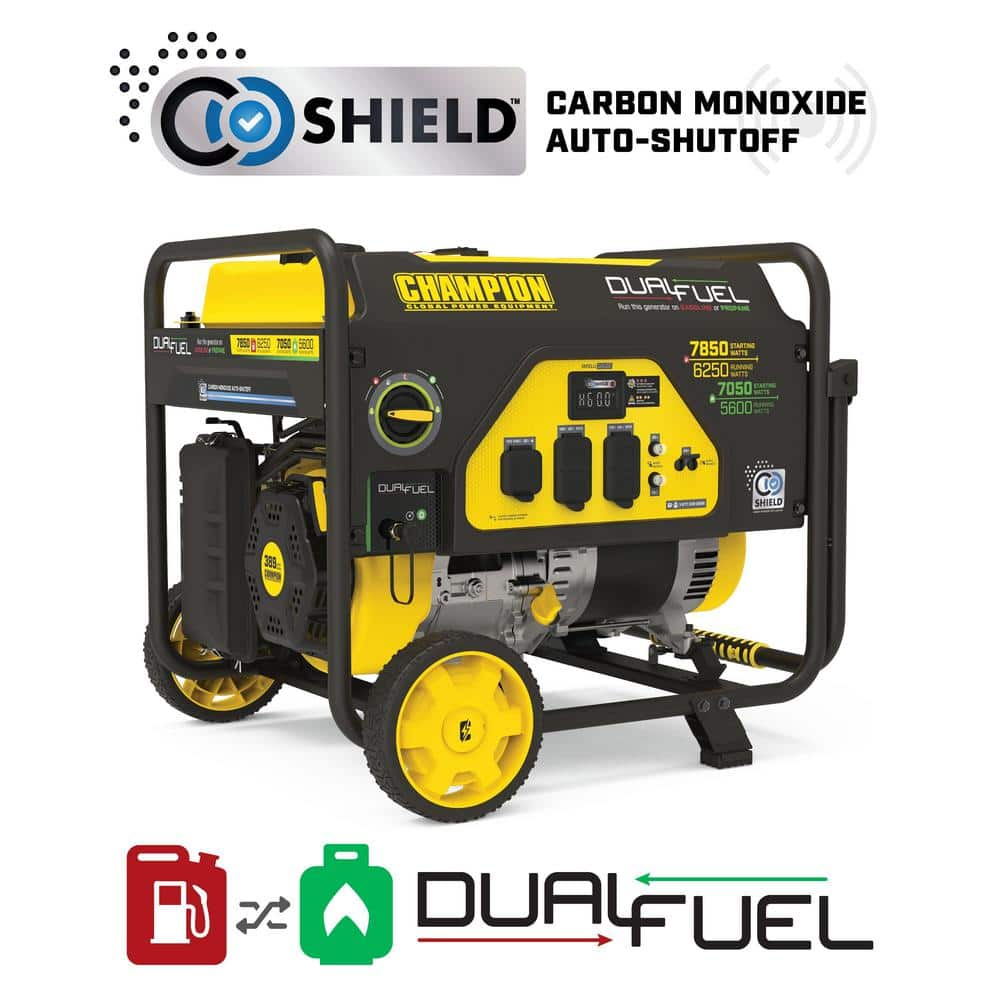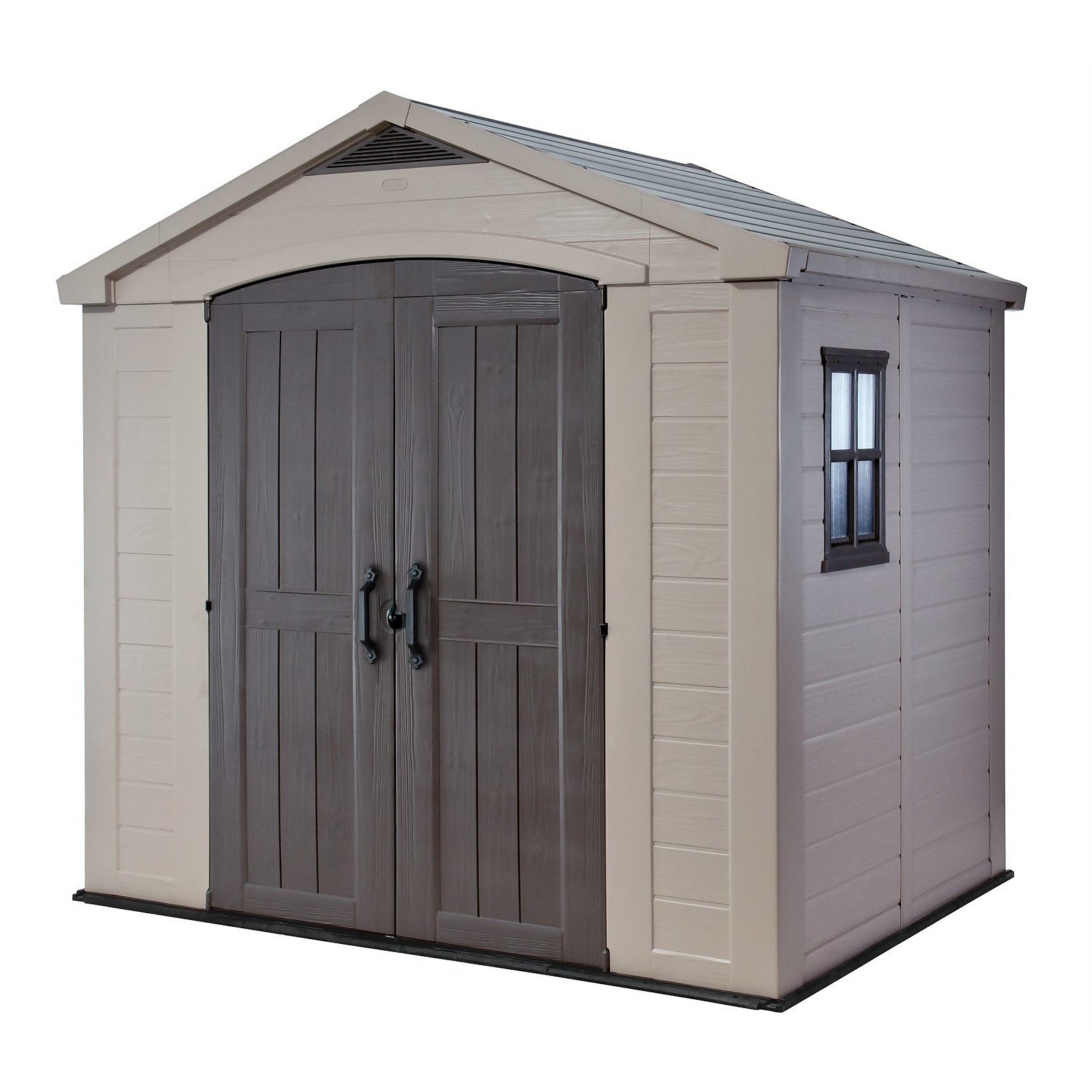Champion Power Equipment 7850/6250-Watt Gasoline and Propane Powered Dual Fuel Portable Generator with CO Shield
Designed with a low oil shut-off sensor, this unit includes 1.2-quarts of 10W-30 oil. Easily switch fuels with our fuel select dial. The 389cc Champion engine produces 7850 starting watts and 6250 running watts, and will run for 11 hours at 50% load when the 7.7-gallon fuel tank is full. It produces 7050 starting watts and 5600 running watts and will run for 6.5 hours at 50% load when using a 20-pound propane tank.
The Champion Power Equipment 100592 6250-Watt Dual Fuel Portable Generator with CO Shield is more convenient than ever. Designed with a low oil shut-off sensor, this unit includes 1.2-quarts of 10W-30 oil. Easily switch fuels with our fuel select dial. The 389cc Champion engine produces 7850 starting watts and 6250 running watts, and will run for 11 hours at 50% load when the 7.7-gallon fuel tank is full. It produces 7050 starting watts and 5600 running watts and will run for 6.5 hours at 50% load when using a 20-pound propane tank. Also included is a 6.5-foot propane hose with a built-in regulator. With a noise level of 74 dBA from 23 feet, plus the Volt Guard protects your generator from electrical voltage spikes. Plenty of outlets are available, with a 120/240V 30A locking outlet (L14-30R) as well as four 120V 20A GFCI protected household outlets (5-20R). CO Shield technology monitors the accumulation of carbon monoxide (CO), a poisonous gas produced by engine exhaust when the generator is running. If CO Shield detects unsafe elevated levels of CO gas, it automatically shuts off the engine. CO Shield is not a substitute for an indoor carbon monoxide alarm or for safe operation. DO NOT allow engine exhaust fumes to enter a confined area through windows, doors, vents or other openings. Generators must ALWAYS be used outdoors, far away from occupied buildings with engine exhaust pointed away from people and buildings. Meets the requirements of ANSI/PGMA G300-2018.
Highlights
- Operate your 6250-watt portable generator right out of the box on either gasoline or propane, plus the unit holds 1.2-quarts of oil (included) and has a low oil shut-off sensor
- Prevents overloads and keeps your valuable equipment safe from voltage spikes, plus Intelligauge keeps track of voltage, frequency and operating hourslock
- At 7850 starting watts and 6250 running watts, enjoy up to 11 hours of run time on a full tank of gasoline with a noise level of 74 dBA from 23 feet
- Includes 3-year limited warranty with FREE lifetime technical support from dedicated experts
- Tools needed for wheel kit assembly: pliers and metric wrench or socket set
Additional information
| Product Height (in.) | 24.4 |
|---|---|
| Product Length (in.) | 324 |
| Product Width (in.) | 27.7 |
| Certifications and Listings | CARB Compliant, EPA Approved |
| Manufacturer Warranty | 3 Year Limited Warranty |






by Chris
The setup was straightforward, and it started on the first try. It runs efficiently on a single tank of fuel. I think it’s a great investment for anyone needing a dependable power source. Highly recommended!
by Logan
Home backup to standby. PROs: Easy manual start, no battery to fail, solid wheels, simple display, customer service provide adjustment info directly, runs well, good voltage regulation and overall great performance for given cost. CONs: governor set at 65 Hz from box, reduced to 62Hz NO load. 65Hz would wear out engine prematurely. However, linkage does not maintain speed setting for given load condition and adjusting with precision DMM frequency meter verified governor linkage does not maintain speed setting/kW. I wish generator designs would set governor for fixed 63Hz at NO Load and have spring coupled linear actuator to constantly pull back to maintain 60Hz regardless of Load condition. Releasing the actuator would then allow rapid torque for step up in Load condition. CO detector caused shutdown despite unit outside, exhaust pointed away from structure and no objects within 5 feet, being that sensitive and having spurious shutdowns will cause some people to try to disable that CO detect function.
by Gregred
This product is fantastic. Very sturdy, dependable and everything you would want in a champion generator. I have used other generators before and this one is the manliest. I highly recommend.